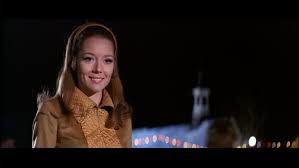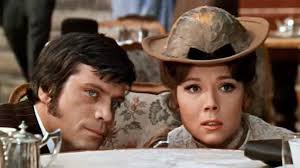
© Penguin Books
For someone who’d normally describe himself as a ‘voracious’ reader, I’ve read a shockingly small number of books in 2022. I’d like to think this was due to the stress and disruption I’ve suffered this year while moving from Sri Lanka (which had been my home for the previous eight years) to Singapore. However, back in January 2022, I contracted Covid-19. Although it was a very mild dose, and seemed to have minimal effects on me, I’ve worried since then that it impacted on my powers of concentration, made me less able to process information, and slowed down the mental faculties I use when reading.
This worried me particularly a few weeks ago when I started reading The Peripheral, the 2014 novel by cyberpunk maestro William Gibson – which, coincidentally, has lately been made into a TV series starring Chloë Grace Moretz. During The Peripheral’s first 100 pages or so, I struggled to follow what was going on, found everything bewildering and came close to giving up on it. Was Covid-19 brain-fog stopping me from getting to grips with the book?
In fact, beforehand, I could have just read the blurb on The Peripheral’s back cover, where the book’s central gimmick that caused me so much initial confusion is plainly explained. But I didn’t read it, wanting to avoid ‘spoilers’.
All of William Gibson’s fiction – of which I’ve read two-thirds of the Sprawl trilogy (1984-1988), all of the Bridge trilogy (1993-1999) and two-thirds of the Blue Ant trilogy (2003-2010) – is disorientating at first. Gibson is not one for exposition. He drops you straight into the action, which invariably unfurls in some near-future scenario with characters peppering their speech with unfamiliar techno-talk, jargon and cultural references. All of which your reading-brain simply has to get acclimatised to. So, I knew what to expect, but with The Peripheral I was alarmed at how long the process of acclimatisation took. For a large, early section of it, I felt I was sinking.
But finally, after the 100-page-mark, I began to swim. That’s when the book became really enjoyable, as enjoyable as anything else that Gibson’s done. And before I proceed any further, I should warn you that there’ll be spoilers here too.
Once you grasp the novel’s basic premise, following it becomes much easier. For events aren’t happening in one future scenario but in two. There’s a setting not too far into the future, featuring a rural American town where life isn’t much different from that in 2022 – just a bit cruddier. The environment has been even more degraded, it sounds like warfare has become more high-tech but no less brutal, there are possibly even more chain stores and fast-food joints, and much of the local economy seems based on drug production. Meanwhile, the characters make extensive use of 3-D printing and drone technology, and we hear of a recent fad where kids played with cute little Transformers-like robots that had iPads instead of heads.
In this setting, the novel’s heroine, Flynne, fills in for her brother Burton for a few days while he’s out of town. Burton, a former soldier, gets paid for playing a role in a strange new virtual reality / video game – presumably testing it out – by an ask-no-questions company that’s supposedly based in South America. Flynne takes over his role in the game and, while playing, witnesses a murder in a cityscape that looks weirdly similar to London but at the same time isn’t London.
This strange version of London provides the book’s other setting. It’s a real place, only seven decades further into the future. The murder that Flynne believed she witnessed in a game has happened in reality, and a publicist called Wilf Netherton and his wealthy pal Lev Zubov, scion of a family of London-based Russian oligarchs, are informally investigating the disappearance of the person Flynne saw killed. Lev has been using a form of time travel – well, time-travelling communication via a mysterious ‘server’ created in China – to hire people in the past to carry out operations for him. Those hirelings believe they’re working in computer simulations in their own time. It becomes obvious they need to get in closer contact with Flynne, who’s the only witness to what happened. However, whoever engineered the murder has access to the server too and is soon hiring assassins in Flynne’s time to take out her and her brother.
Gibson explores the book’s two-different-futures-in-communication gimmick to the full. The protagonists living in the further-away future have full knowledge of the earlier one, including its economy. Thus, using the server and their knowledge, they can manipulate that economy to finance interventions in it. While Wilf and Lev tamper with the world around Flynne and Burton, making them exponentially richer, able to create their own corporation and pay for their own protection, the villains of further-future London intervene too – not only staging assassination attempts, but also recruiting to their cause the unsavoury corrupt politician / drug manufacturer who controls Flynne and Burton’s hometown, and sending against them a cult of demented Christian fanatics (whom Gibson has evidently modelled on the real-life, loathsome Westboro Baptist Church).
Things step up a further gear when Wilf and Lev manage to send back in time some advanced technology, via a 3-D printing company run by Flynne and Burton’s friends. This allows Flynne, Burton and others to transfer their minds to the future London, where they’re embedded inside ‘peripherals’ – artificial, semi-cyborg bodies that can be humans, animals or homunculi – which the people of the era hire out and inhabit for special occasions in the way that people of past eras hired out and wore fancy dress. And Wilf amusingly gets to make a trip in the other direction, where he’s psychically installed inside one of the iPad-robot toys of Flynne’s time.
One thing that I’ve noticed about Gibson is the importance he attaches to communities. This was especially noticeable in his Bridge trilogy, where he had San Francisco’s Golden Gate Bridge taken over by a band of outsiders, misfits and radicals and turned into a township where they live their lives according to their non-corporate, eco-friendly ideals; or a ‘cardboard city’ of homeless people at a major Japanese railway station that’s actually a refuge for computer hackers, otaku and general ‘cyber-gypsies’. In The Peripheral, much is made of the rundown, hard-pressed and exploited community that’s home to Flynne, Burton and their family and friends – many of those friends being military veterans like Burton. They don’t have it easy, but they stand by one another, even when threatened by murderous thugs employed by dark forces from the future. This includes looking out for an ex-soldier called Conner, who’s returned from the battlefield both mentally and (severely) physically damaged. Indeed, one highlight is when Conner’s mind get transferred to future London and, to his joy, he finds himself inhabiting a full-bodied peripheral. A full body is something he hasn’t had for a long time.
Meanwhile, Gibson’s description of London in that further-off future is ripe with satire. Russian oligarchs are so established there they’ve practically become the aristocracy, while advanced technology has allowed areas of it to be turned into tourist-orientated recreations of the Victorian past – as if parts of London aren’t that way now. He also gently takes the piss with the character of Inspector Ainsley Lowbeer, a police detective investigating the murder who seems to know more about what’s happening than she lets on. Lowbeer embodies every imperturbable, raffish crime-fighter in a long tradition of non-realistic British crime stories. I wondered at first if Lowbeer was conceived as a female version of John Steed from the TV show The Avengers (1961-69), but recently on social media I saw Gibson state that he’d imagined her as ‘Tilda Swinton channelling Quentin Crisp.’
Faults? Well, occasionally, Gibson’s description of the action – the full-on action scenes, with danger and violence – can be frustratingly sparse, to the point where you have to reread his descriptions a couple of times to figure out what’s just happened. He’s a writer who’s interested in fast-moving narratives but not so much in action itself. Also, while the peripherals are a logical plot-component, the concept of them seems slightly old-hat after James Cameron made extensive use of the same concept five years earlier in his movie Avatar (2009). Not that that’s Gibson fault, of course.
And connoisseurs of time-travel stories might find it a cop-out that Wilf and Lev can interfere in their past as much as they like without suffering any effects in their present. This is because, Gibson explains, the moment they start interfering they create a ‘stub’ – an alternative timeline where the reality containing Flynne, Burton and the others begins to branch off from the established, ‘official’ timeline, developing in its own way towards its own, unknown future. The idea makes sense, but some may miss the complexity of a traditional time-travel story where interference in the past has unexpected and unwelcome consequences in the interferers’ present. See Ray Bradbury’s 1952 short story A Sound of Thunder for the classic example.
The Peripheral is very entertaining, then, but there’s a grimness at its heart that’s rather like finding a dollop of ultra-sour cream within an ice-cream sundae. The grimness is something called the Jackpot. This isn’t a single cataclysmic event but a protracted series of smaller ones – “droughts, water shortages, crop failures, honeybees gone like they almost were now, collapse of other keystone species, every last alpha predator gone, antibiotics doing even less than they already did, diseases that were never quite the one big pandemic but big enough to be historic events in themselves” – that represent humanity reaping what it sowed with its onslaught against the natural environment. The Jackpot occurs between the novel’s two time-settings and accounts for something Flynne notices when, in peripheral form, she arrives in future London. There seem to be very few people around.
Late on in The Peripheral there are suggestions that, as their timeline diverges from the established one, Flynne, Burton and her friends, empowered by future technology and investment, can do something to avert or at least alleviate the Jackpot and create a better future for themselves. Meanwhile, away from the pages of Gibson’s novel and looking at the dismal, real-life events of the early 21st century, I fear we’ll be hitting our own Jackpot all too soon.

From wikipedia.org / © Gonzo Bonzo





